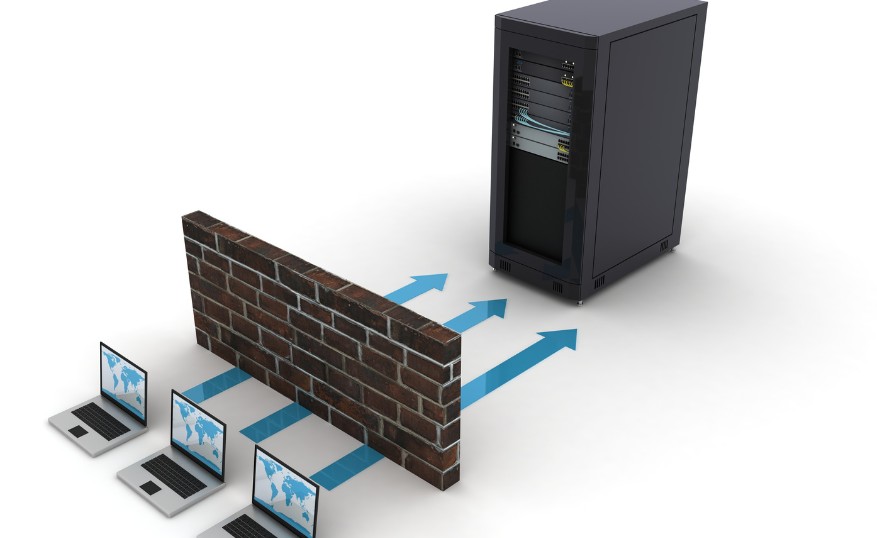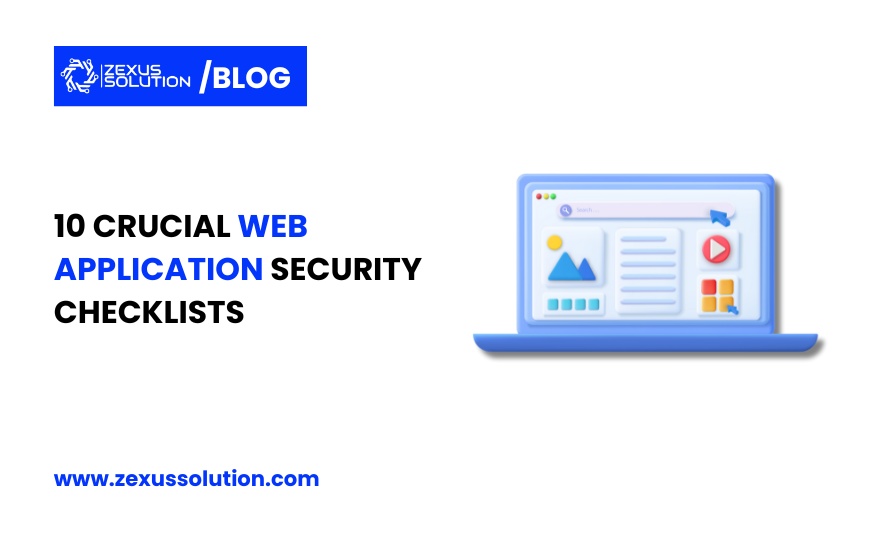Table of Contents
In today’s world where people spend most of their time on their mobile phones and browsing the internet, web applications have become necessary for any business. Nevertheless, the growth of web application usage also leads to increased possible security issues.
These applications usually contain important data, such as user information, identifiable data, and numeric data. Therefore, it is essential to ensure the security of a web application to protect the information and to prevent the loss of users’ trust.
To achieve this, implementing a comprehensive web application security checklist is essential. This checklist outlines the fundamental steps necessary to establish robust security measures for every web application.
Input validation

In terms of a web application security checklist, input validation is the first layer of protection against numerous attacks. To protect your application against injection attacks and cross-site scripting (XSS), you must sanitize and validate user inputs.
These vulnerabilities enable attackers to run code on the target system and perhaps, get access to confidential information. Input validation must be performed both on the client and the server end.
How to Implement Input Validation
- It is recommended to use both client-side and server-side validations. If possible, it is recommended to use server-side validation before the client-side one.
- Sanitize the user input to eliminate any characters or data that can be potentially damaging.
- Make sure that the inputs match certain standards like the format and range.
Framework Support: Like any other framework, there is a standard set of tools for input validation in several frameworks. For instance, the employment of a parameterized query or ORM solution can assist in preventing SQL injection.
Authentication and Access Control
Securing user access through robust authentication and access control mechanisms during web application development is essential for safeguarding your web app. By ensuring that only authorized users can access your application and its resources, you can significantly reduce the risk of unauthorized exploits and data breaches.
During the web app development process, you must properly authenticate the user access and there should be an access control for your web app. Another way of preventing people from accessing your application and its resources they are not supposed to is by limiting access to it.
How to Implement Authentication and Access Control
- Always employ proper hashing algorithms when storing password data.
- Activate Multi-factor Authentication (MFA) to enhance security measures in your online accounts. Some of the techniques used are the use of shortcodes via mobile phone or the sending of verification codes via email.
- Make sure to implement Role-Based Access Control (RBAC), which implies that users should only have access to the required resources.
Framework Support: Many frameworks offer ways to ensure that the application has sound authentication and access control.
HTTPS and TLS Encryption

Another protocol that is worth mentioning that needs to be followed when creating a progressive web application is to use HTTPS and TLS encryption to ensure the safe transmission of data. HTTP is a basic protocol for accessing web resources, and its secure version, HTTPS, is based on HTTP and creates a secure TLS connection between the web server and the client’s browser.
This helps to guarantee that the information shared is encrypted and safeguarded against attacks.
How to Implement HTTPS and TLS
- Ensure to acquire valid SSL/TLS certificates for the website from reliable certificate authorities and renew them frequently.
- Make certain that all the web pages, particularly the ones that process user data, are secure by incorporating HTTPS.
- Regularly update SSL/TLS certificates from recognized authorities, and ensure SSL on all web pages.
Framework Support: Most hosting options make it easy to deploy applications with HTTPS.
CORS
CORS stands for Cross-Origin Resource Sharing, which is a security measure in web browsers to permit or deny web applications from one domain to access resources in another domain.
This is important for restraining access to your web application’s resources from certain domains, which will help to reduce the possibility of getting attacked by certain web-based threats like the CSRF and XSS attacks.
How to Implement CORS
- Use CORS headers to either allow or disallow other domains from accessing the current web page.
- Use the policy configuration information and specify which domains, methods, and headers may be used.
Framework Support: Most application frameworks such as Spring Boot for example provide simple mechanisms to enable CORS support.
Penetration Testing

Penetration testing is a form of preventive technique to check your web application for loopholes that attackers may exploit. The purpose of penetration testing is to mimic an attack to discover the vulnerabilities that can be leveraged by attackers.
There are three types of penetration testing: White box, black box, and grey box. In white box testing the tester has full knowledge about the system, in black box testing the tester has no prior knowledge of the system and in grey box testing the tester is given limited information.
Including penetration testing in your security measure plan besides your normal web application maintenance services ensures that your application is protected from new threats and weaknesses.
How to Implement Penetration Testing
- Use specific technologies to conduct realistic simulations to determine the weaknesses.
- Hire skilled penetration testers to conduct penetration tests periodically, so that any loopholes that may be present are detected and addressed.
Framework Support: Some different tools and firms offer solutions for penetration testing.
DevSecOps Approach

It refers to a process of incorporating security factors into the entire web application development process. This approach entails the involvement of the security personnel in the development cycle, and the implementation of the security controls through the use of SAST, DAST, and other vulnerability assessment tools.
DevSecOps is a way of incorporating security into development and operations to ensure that security is incorporated right from the development process rather than being added afterward.
How to Implement DevSecOps
- Use security testing in the CI/CD pipelines to automate security measures.
- Employ Static Application Security Testing (SAST), Dynamic Application Security Testing (DAST), and vulnerability assessment instruments.
Framework Support: Most of the CI/CD platforms can be integrated with security tools.
Secure Configuration and Deployment Practices
The configuration and deployment of web applications are critical to the security of such applications. This involves, for instance, ensuring that the way you configure your web server is optimized for your application and that your database is well protected.
A few key points should be followed; one has to make sure that the team is skilled enough and that the web application security checklist of deployment are in place and properly followed.
Securing servers and databases, as well as checking configurations during deployment, can minimize the risk of vulnerabilities and unauthorized access. Using the best mobile app technology and incorporating security features guarantees users a secure web app.
How to Implement Secure Deployment
- Security codes should be employed and adhere to the best practices of web server and database configurations.
- Develop elaborate checklists to guarantee proper implementation of standard security measures.
Framework Support: Most of the deployment tools and platforms have guidelines and pre-installed security measures.
OWASP’s Application Security
The OWASP in web application security checklist is a very useful guide for developers willing to strengthen their web applications against common threats and risks.
It includes fundamental security features such as strong user authentication and authorization, input validation to prevent injections and cross-site scripting, error management for avoiding information disclosure, and data encryption, both in transit and at rest.
Important practices include the encryption of passwords, the use of MFA (multi-factor authentication), and secure session management.
How to Implement OWASP Guidelines
- Integrate the OWASP checklist into the development and deployment process.
- Explain to developers the principles of OWASP to incorporate the current and most efficient safety measures.
Framework Support: The guidelines provided by the OWASP can be implemented regardless of the framework being used.
Logging Practices
Timely logs and monitoring are crucial to detect the threats to the security and carry out investigations in the event of a breach. Some of the points mentioned for secure logging practices include proper storage of logs, limiting access to the logs, and avoiding the use of logs that include sensitive information.
Hiding sensitive information and making sure that debug log statements cannot be seen in the production code are very important. This ensures that the attacker’s activities are recorded in fine detail and that all the weaknesses are corrected to prevent a repeat of the attack.
How to Implement Proper Logging
- Make sure logs are properly preserved and made available only to the authorized personnel.
- Minimize the use of the log file to record sensitive data or if such data must be stored, make sure it is encrypted.
Framework Support: Logging frameworks like Log4j and ELK stack are available to offer good and strong logging solutions.
Web-Application Firewall (WAF)

A WAF operates as a barrier between a web application and the internet and it analyzes, scrutinizes and filters the traffic in order to identify and eliminate threats. Some of these are cross-site scripting (XSS), SQL injection and denial of service (DoS) attacks.
A WAF works in a way that it can scan the HTTP requests and responses in real-time and can block the malicious activity before getting through to the server. It is a proactive defense mechanism that enables one to counteract threats specific to the web applications in addition to reinforcing the shield against new threats emerging.
How to Implement a WAF
- Set up a WAF to monitor and filter incoming traffic to analyze traffic patterns and block suspicious activity.
- Keep the WAF rules and definitions up-to-date.
Framework Support: Some of the cloud providers include integrated WAF solutions, which helps in quick and easy deployment and management of this security measure.
End Line
Web application security is a never-ending process that needs time, effort and more importantly it needs to be approached in a preventive manner. By following this web application security checklist, you will be able to greatly improve the security of your web applications and your users’ data.
With our professional application development and maintenance services, we are well-positioned to assist you to meet and sustain high levels of security. We guarantee that by implementing agile development for mobile apps, your applications will be secure, efficient, and ready for future developments.
You can maintain a competitive edge by focusing on security and collaborating with professionals. It’s possible to create secure web applications that are reliable and meet the highest standards of quality and performance if you get the right team by your side.



Add a Comment